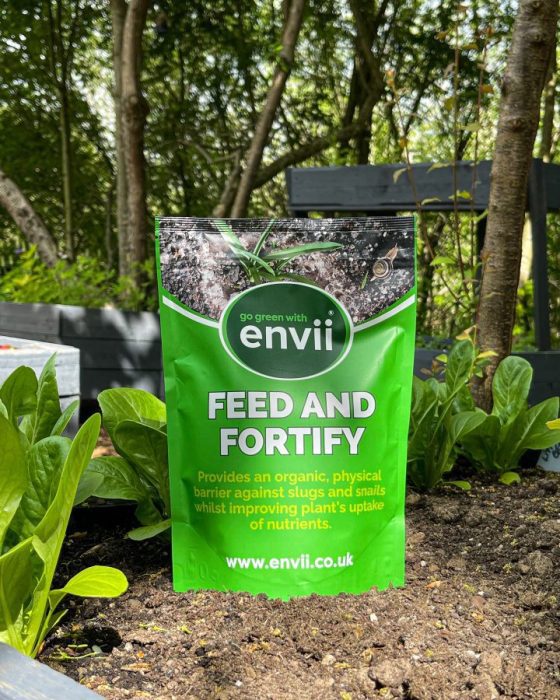April is the time for gardeners to get ahead with sowing and planting. The good news is that there are plenty of options for gardeners for what to grow. However, the challenging decision for many is if or when to sow seeds. While April marks the rise of spring, there are still fluctuations between warm and cold weather in the UK. This isn’t always favourable when it comes to seed germination. Despite this, the grow your own show must go on!
We’re sharing gardening tips for April to help you kick start your growing season with advice on seed sowing, preparing growing beds, pest protection and more…
Preparing Seedbeds for Spring
Seedlings are a vulnerable stage of a plant’s life. Therefore, it’s important to provide them with the perfect environment from the time that they’re just seeds. Not only for germination but also for early-stage development. This can be done by preparing seed beds. Always aim to prepare seed beds in advance to allow the soil to settle in time for sowing. Ideally, by April your seed beds should already be prepared. If not, here are three tips to help quickly prepare your growing space:
- 1. Thoroughly remove weeds from the soil. Including all of the roots, which might otherwise cause weeds to return.
- 2. Make sure the soil is healthy and fertile. Remove any hard bits or stones. Lightly water and sprinkle the soil with fertiliser, digging into work the nutrients in. This should create a balanced, moist and fertile environment for your seeds.
- 3. Nothing says seed ready than perfectly raked soil. Rake and create a smooth surface for your upcoming sowings.

Hardening Off Plants
Those of you with pre-sown and grouping seedlings should start to harden off your plants as the weather begins to warm up. Hardening off is a simple process of exposing plants to outdoor conditions for a portion of the day (particularly the temperature) so they’re better-accustomed o the environment when the time comes to plant out.
Tips for hardening off young plants
- • Initially take young plants out on overcast days to prevent a drastic sudden increase in UV light exposure from the sun. Gradual exposure is best. This also means plants will experience a more consistent temperature throughout the day.
- • Start with a small amount of time outdoors e.g. 3 hours and then gradually increase until plants can spend most of the day outdoors.
- • Make sure plants have support if required to protect them from strong winds and pests.
- • Stay up to date with weather forecasts so you can plan for when it’s the best time to harden off your crops.

Pest Protection
Spring is the prime time for slugs to return to your garden. They simply can’t resist the perfectly moist condition caused by rain, combined with a feast of your beloved vegetable crops! Slugs are problematic throughout the growing season, but it’s best to deal with them nice and early. Get on top of pest protection with an organic slug deterrent to ensure your plants don’t suffer any damage.

What to Sow/Plant in April
Sowing Directly Outdoors
Broad Beans, Brussels Sprouts, Carrots, Leeks, Onions, Peas, Radishes, Sprouting Broccoli.
Sowing Outdoors Undercover
Beetroot, Cucumbers, Lettuce, Salad Leaves and Turnips.
Sowing Indoors
Aubergines, Celery, Courgettes, Cucumbers, French Beans, Kale, Pumpkins/Winter Squashes, Runner Beans and Tomatoes.
Gardening Tips for Sowing Outdoors in April
- • The best time to sow seeds directly outdoors is when temperatures are consistently above 15 degrees Celsius on average. Some crops such as carrots, cabbages, lettuce, peas and spinach are more tolerant. Their seeds can germinate at slightly lower temperatures between 7 to 12 degrees Celsius.
- • Don’t apply fertiliser to seeds straight away. They’re sensitive and could potentially ‘burn’ due to overwhelming exposure to nutrients.
- • Some crops have very similar looking seeds, especially the smallest in size. Once planted, it can be very difficult to identify and cater to the need of the specific plant until it’s established. To avoid this, use markers to identify and locate your seeds.
- • Follow the specific sowing instructions from the original seed packet. Different seeds, even of the same variety may have slightly different sowing and growing requirements.

 Call us on 01246 240880
Call us on 01246 240880 Free 48hr Delivery
Free 48hr Delivery Sign-up and receive 10% off
Sign-up and receive 10% off